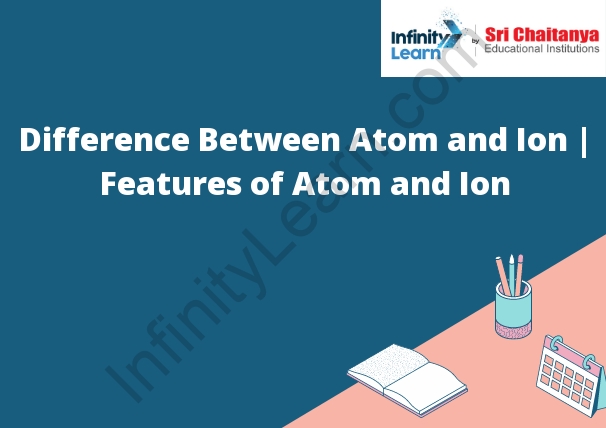Table of Contents
Features of Atom and Ion
Difference Between Atom and Ion | Features of Atom and Ion: Atom is the smallest particle of an element that has the chemical properties of that element. An atom is made up of protons, neutrons, and electrons. Protons and neutrons are in the nucleus of the atom and electrons orbit around the nucleus. The number of protons in an atom determines what element it is. For example, an atom with one proton is hydrogen, an atom with six protons is carbon, and an atom with 92 protons is uranium.
Ion is an atom or molecule that has lost or gained one or more electrons and has an electric charge. Positively charged ions are called cations and negatively charged ions are called anions. Cations are formed when an atom loses one or more electrons and anions are formed when an atom gains one or more electrons. Ions are important in chemistry because they are the particles that participate in chemical reactions.

Introduction to Atoms
- An atom is the smallest particle of an element that has the chemical properties of that element. The smallest atom is hydrogen with one proton and one electron. The largest atom is uranium with 92 protons and 146 neutrons.
- An atom has a nucleus which is made up of protons and neutrons. The number of protons in an atom’s nucleus determines what element the atom is. For example, an atom with six protons in its nucleus is carbon, while an atom with 92 protons in its nucleus is uranium.
- Electrons orbit the nucleus in shells. The number of electrons in an atom’s outermost shell determines what kind of element it is. For example, an atom with two electrons in its outermost shell is a helium atom. An atom with eight electrons in its outermost shell is an oxygen atom.
Features of Atom on the Basis of Modern Atomic Theory
- First and foremost, atoms are incredibly small. So small, in fact, that they cannot be seen with the naked eye. They are also incredibly lightweight; a single atom weighs less than a millionth of a gram.
- Atoms are also incredibly durable. Even the strongest materials in the world, such as diamonds, are made up of atoms that can be split apart with enough force.
- Atoms are also incredibly numerous. There are more than 100 billion billion atoms in a single tablespoon of water.
- Lastly, atoms are incredibly diverse. There are more than 100 different types of atoms, each with its own unique properties.
Ions
- Ions are atoms that have gained or lost an electron, and as a result, have a net electric charge. Ionization occurs when atoms lose or gain electrons, and the process can create ions with a net electric charge.
- When an atom loses an electron, it becomes a positively charged ion, or cation. When an atom gains an electron, it becomes a negatively charged ion, or anion. The net electric charge of an ion is the sum of the charges of its individual protons and electrons.
- Ions can be formed through natural or artificial means. In nature, ionization can occur when atoms collide and exchange electrons. In artificial means, ionization can be induced through radiation or electric fields.
- Ions are important for many chemical processes, including photosynthesis and respiration. They are also used in many industrial and medical applications, such as water purification and blood clotting.
Difference between Atoms and Ions
Atoms and ions are both important to chemistry. Atoms are the simplest form of an element, while ions are atoms that have a positive or negative charge. Ions are important because they are able to dissolve in water and conduct electricity. The difference between atoms and ions is that atoms have no charge, while ions have a positive or negative charge.
Atoms are the smallest particle of an element that has the chemical properties of that element. Ions are atoms that have lost or gained electrons and have a net electrical charge. The number of protons in an atom’s nucleus determines what element it is. The number of electrons determines the atom’s charge.






